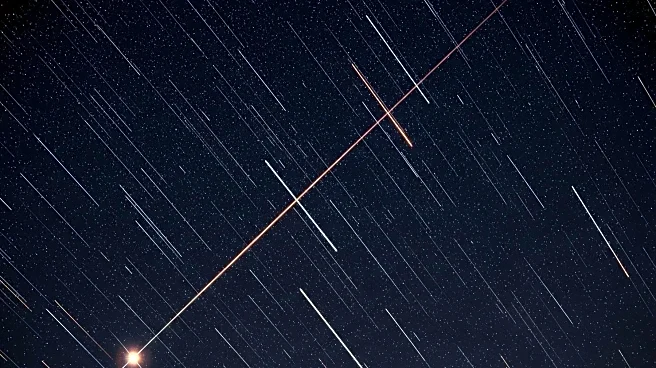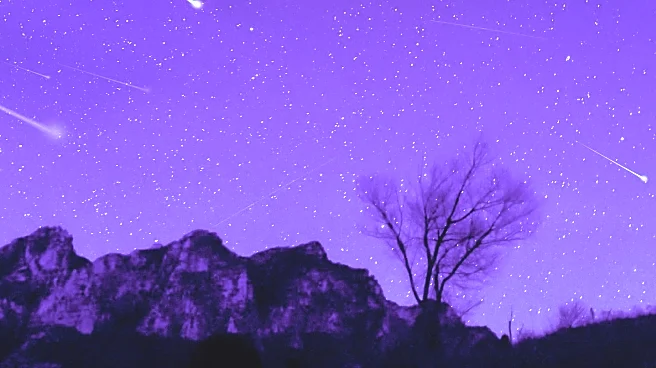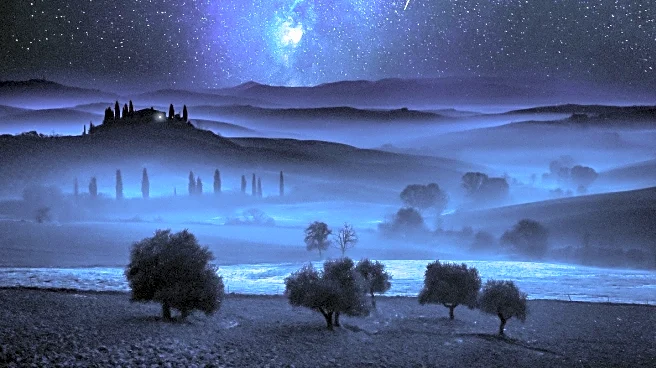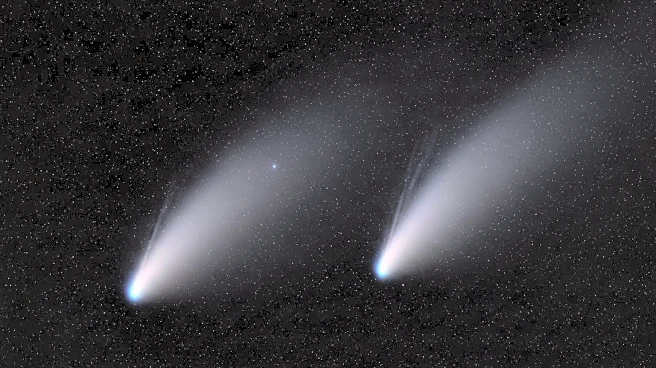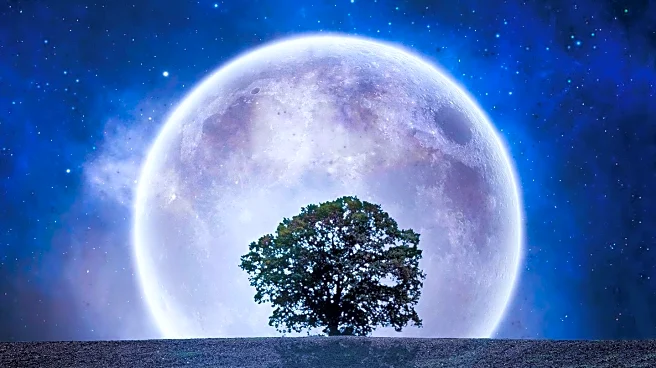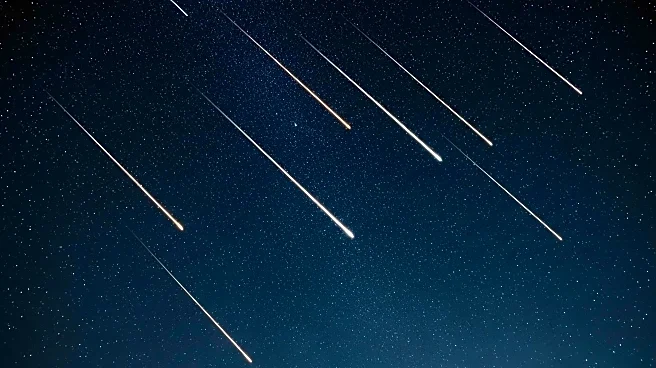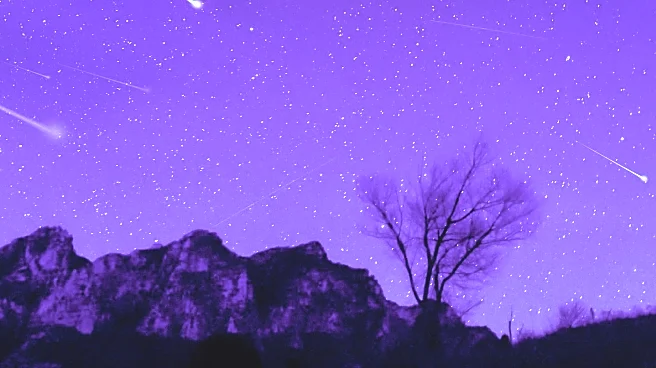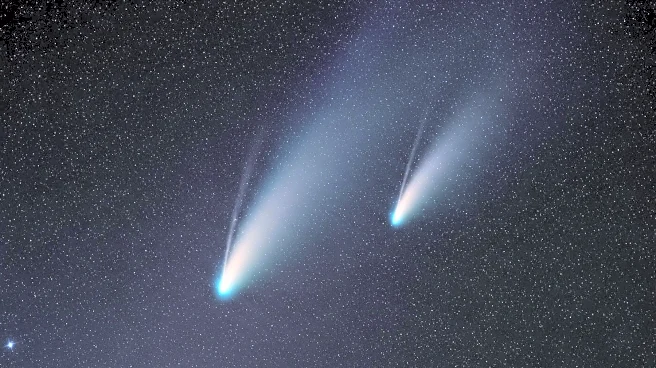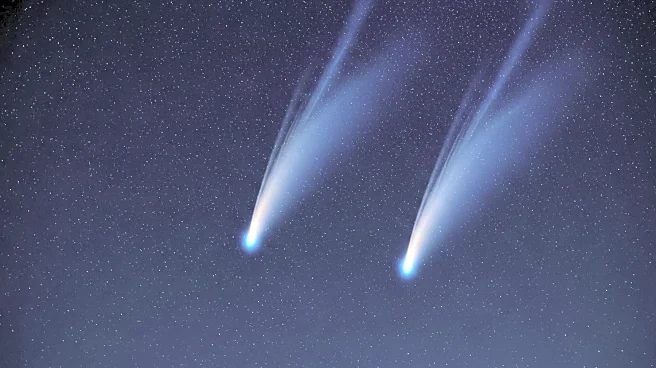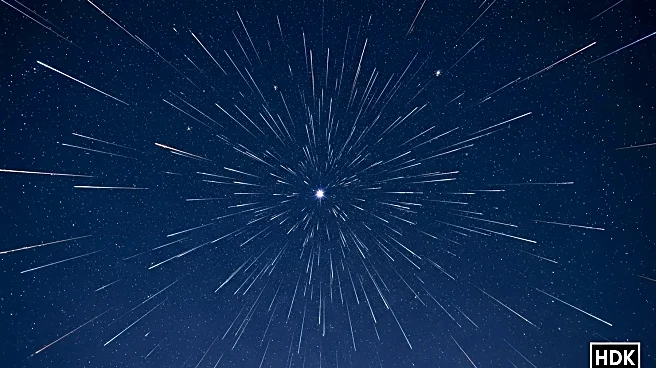What's Happening?
The Draconid meteor shower is expected to peak on the evening of October 8, 2025, offering a chance to see bright 'fireballs' in the night sky. Although the shower is predicted to produce about 10 meteors per hour, the Draconids are known for their bright and dramatic meteors. The shower is conveniently timed for observers in the Northern Hemisphere, as it occurs just after dark. The Draconids originate from the constellation Draco and are caused by debris from Comet 21P/Giacobini-Zinner. The full Harvest Moon earlier in the week may affect visibility, but the brightest meteors should still be visible.
Why It's Important?
The Draconid meteor shower provides an accessible opportunity for skywatchers to observe meteor activity without the need for specialized equipment. The timing of the shower, occurring just after dark, makes it more accessible to a wider audience, including families and amateur astronomers. The potential for bright fireballs adds to the spectacle, drawing attention to the natural wonders of the night sky. Such events can inspire interest in astronomy and science, fostering a greater appreciation for celestial phenomena.
What's Next?
Skywatchers are encouraged to look north on October 8 for the best chance to see the Draconid meteors. The possibility of northern lights and the visibility of two comets, Comet Lemmon and Comet SWAN R2, add to the celestial events occurring around this time. Observers are advised to check weather conditions and find a location with minimal light pollution for optimal viewing. The ongoing interest in meteor showers and other celestial events may lead to increased public engagement with astronomy and related sciences.

